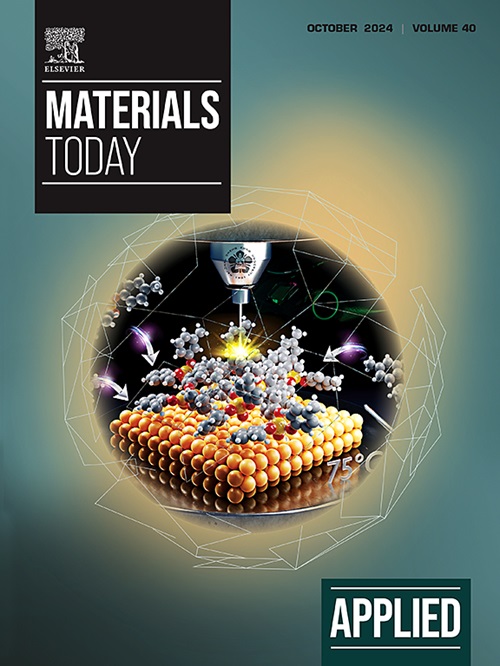用于宽带光调制的铝纳米线嵌入硅:成型机理与光学性能
IF 6.9
2区 材料科学
Q1 MATERIALS SCIENCE, MULTIDISCIPLINARY
引用次数: 0
摘要
近几十年来,硅因其宽带高折射率和低色散特性而被广泛应用于光调节器件。为了满足各种应用日益增长的需求,光调制技术在提高硅基器件的光学性能方面具有巨大潜力。然而,要在不引入复杂人工结构的情况下实现对带状结构和共振模式的精确控制,仍然存在挑战。在这项研究中,通过磁控溅射技术开发了一种由硅和高分辨率铝纳米线组成的复合薄膜。研究发现,铝纳米线的形成归因于硅和铝之间的自发相分离,而这与共溅射过程中铝的填充分数和表面扩散长度密切相关。通过离子轰击操纵金刚原子的扩散和再蒸发,可以精确调节复合材料的微观结构,从而改变其宽带光学特性。此外,通过在硅中加入铝纳米线,还实现了优异的电磁特性,这体现在短波长范围内的金属特性和红外光谱范围内的介电特性。本文章由计算机程序翻译,如有差异,请以英文原文为准。
Al nanowire-embedded silicon for broadband optical modulation: Forming mechanism and optical performance
In recent decades, silicon has been widely used in light regulation devices, owing to its wideband high refractive index and low dispersion. To meet the increasing demands for various applications, optical modulation techniques appear of great potential to enhance the optical performance of Si-based devices. However, challenges still remain in achieving precise control over the band structure and resonance modes without introducing complex artificial structures. In this study, a composite film composed of silicon embedded with high fraction aluminum nanowires was developed by magnetron sputtering. It was revealed that the formation of aluminum nanowires was attributed to the spontaneous phase separation between silicon and aluminum, which was strongly dependent on the filling fraction and surface diffusion length of the aluminum during the co-sputtering process. The composite microstructure was precisely regulated by manipulating adatom diffusion and reevaporation through ion bombardment, thereby modifying its broadband optical properties. Moreover, exceptional electromagnetic properties were achieved by incorporating aluminum nanowires into silicon, as evidenced by the metallic behaviors in the short-wavelength regime and dielectric properties in the infrared spectrum range.
求助全文
通过发布文献求助,成功后即可免费获取论文全文。
去求助
来源期刊

Applied Materials Today
Materials Science-General Materials Science
CiteScore
14.90
自引率
3.60%
发文量
393
审稿时长
26 days
期刊介绍:
Journal Name: Applied Materials Today
Focus:
Multi-disciplinary, rapid-publication journal
Focused on cutting-edge applications of novel materials
Overview:
New materials discoveries have led to exciting fundamental breakthroughs.
Materials research is now moving towards the translation of these scientific properties and principles.
 求助内容:
求助内容: 应助结果提醒方式:
应助结果提醒方式:


